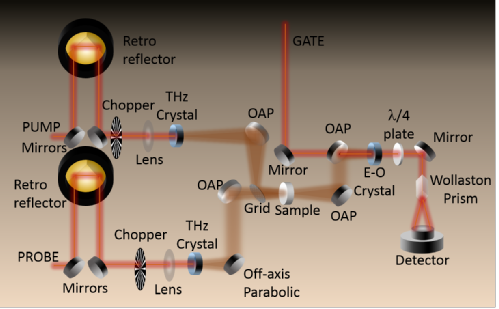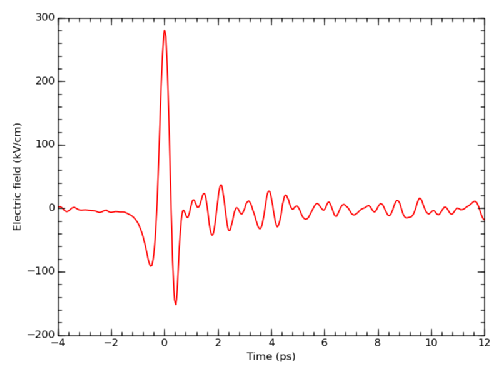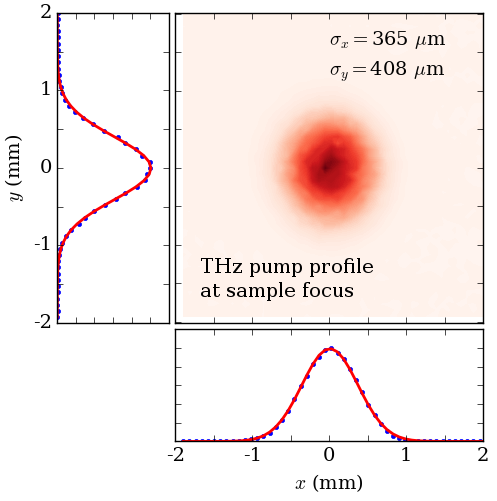Terahertz Pump Terahertz Probe

Terahertz pump terahertz probe spectroscopy is used to follow the dynamic evolution of the far infra-red absorption spectroscopy of a sample following excitation by a high electric-field femtosecond THz pulse. This technique allows us to study such properties as spin dynamics in quantum materials on a femtosecond timescale, and to look at the bleaching of free-carrier absorption in semiconductors.
Spectrometer design: The THz excitation pulse is generated by focussing 800 nm radiation onto a lithium niobate crystal using the tilted pulse front method. This generates a spot at the sample position with a peak THz electric field of up to 300kV/cm (see Figure 2). The diameter of the THz pump beam is around 1.5mm (see Figure 3), with a gaussian width around 400um in both x and y in its intensity profile.

Probe pulse and detection: The probe pulse is generated by focussing 800 nm radiation onto an electro-optic crystal such as gallium phosphide or zinc telluride. The two THz beams are polarised perpendicularly, and are coupled by way of a wire grid polariser. Off-axis parabolic mirrors are then used to steer and focus the resulting THz radiation onto the sample being studied. Either the THz pump pulse or the THz probe can be detected separately by electro-optic sampling. The THz beams are focused onto an electro-optic detection crystal (either GaP or ZnTe) along with a further 800 nm pulse. This gate beam is split in a Wollaston prism and detected using a balanced photodiode pair. The THz pump is chopped at 500Hz while the THz probe is chopped at 250Hz.

Delay stages: The THz-pump, THz-probe experiment is serviced by two linear delay stages with a travel of 150 mm and a 2 micron accuracy, leading to a 1 nanosecond temporal window and resolution of 7 fs in each case.
Sample environment: Samples can be mounted in either a nitrogen bath cryostat, or a helium flow cryostat, in order to study materials at low temperatures. The THz beam path is enclosed in a nitrogen purge box.

